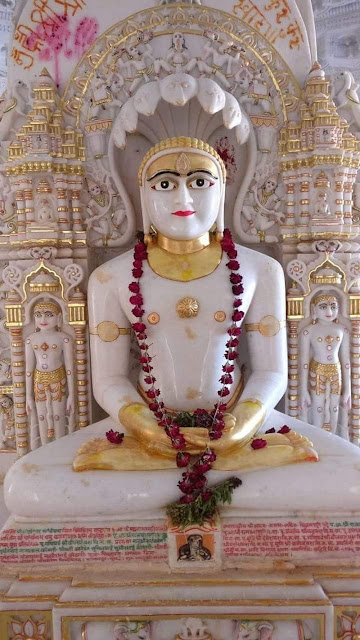On the basis of the attainment of tranquil abiding, one may pass through four form-world absorptions and four formless absorptions, with the meditative equipoise of cessation sometimes added as a ninth.
Mental absorptions may result in various yogic achievements, but they do not assure liberation unless combined with superior insight into the nature of reality.Dhyana (meditation) refers to one of the six limbs of yoga to be employed in Uttamasev (excellent worship), according to the Guhyasamaja chapter 18.
The Guhyasamaja chapter 18. Dhyana (meditation) is explained as the conception of the five desired objects through the five Dhyāni Buddhas, namely, Vairocana, Ratnasambhava, Amitabha, Amoghasiddhi, and Akṣobhya.1) Vitarka (cogitation)
2) Vicara (thinking)
3) Priti (pleasure)
4) Sukha (happiness)
5) Ekagrata (concentration) Dhyana in Buddhism glossary
The Dharma-samgraha (Dharmasangraha) is an extensive glossary of Buddhist technical terms in Sanskrit. The work is attributed to Nagarjuna, who lived around the 2nd century A.D.
2) Dhyana (absorption) or Caturdhyana refers to the “four absorptions” as defined in the Dharma-saṃgraha (section 72):
The second has internal clarity and happiness and joy. The third is equanimous, mindful, and has full knowledge.
The fourth absorption has complete purity of mindfulness and equanimity, with a feeling that is neither unpleasant nor pleasant.3) Dhyana (meditation) or Tridhyana also refers to the “three kinds of meditation” as defined in the Dharma-samgraha (section 109
Do you earnestly cherish our devoted work? Assuming this is the case, we are delighted that you are finding our blog useful and valuable. Would you consider making a donation for our Buddhist research and development?
We need your help to secure the future of scholarly interaction with Buddhism. Since our very first publication of Dharma works and activities in 2008, we have been effortlessly providing free distribution of Dharma posts and articles throughout the previous 16 years.
We have exceptionally constrained support and do not receive subsidies or funding from people in general.
Please help us develop our Dharma activities that will not only benefit you but all Dharma readers on the planet. Please consider showing your support. Your generosity will certainly help us enhance our work and accomplish more for a better and brighter future.
Thank you for reading. May you find peace and great bliss. With your support, it helps to spread the Buddha’s precious teachings and turn the Dharma wheels in the world.
By this merit, may we then obtain omniscience then.




































